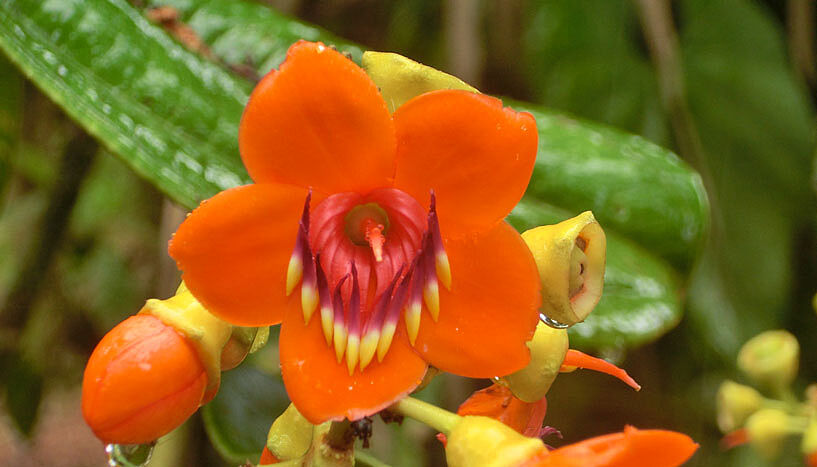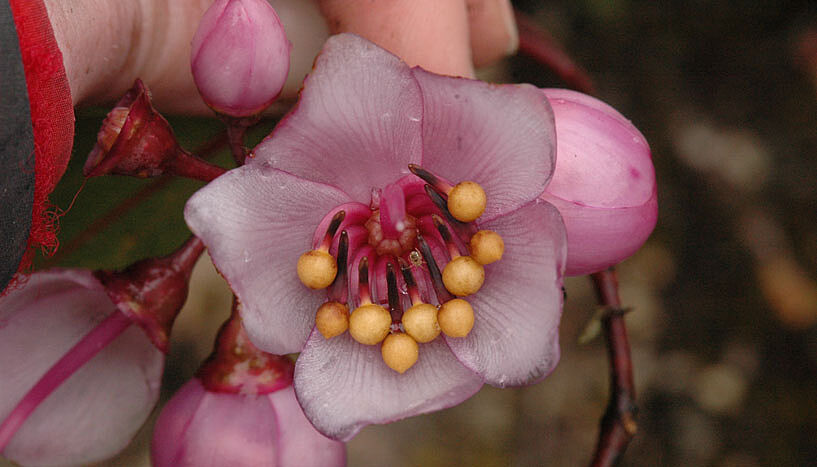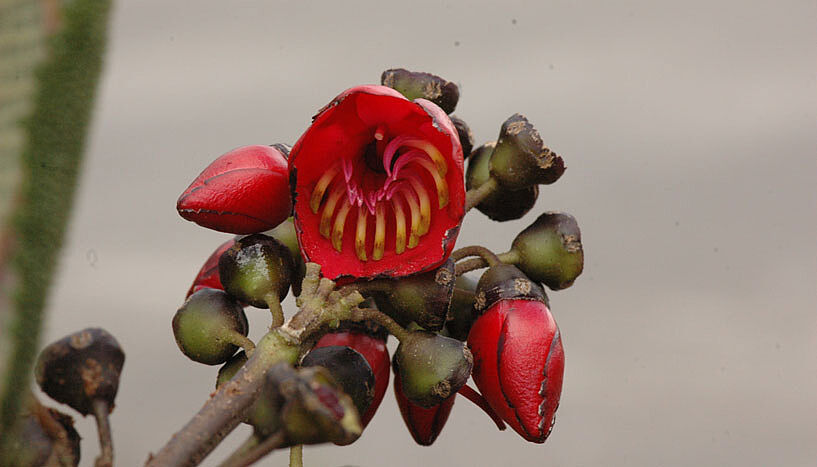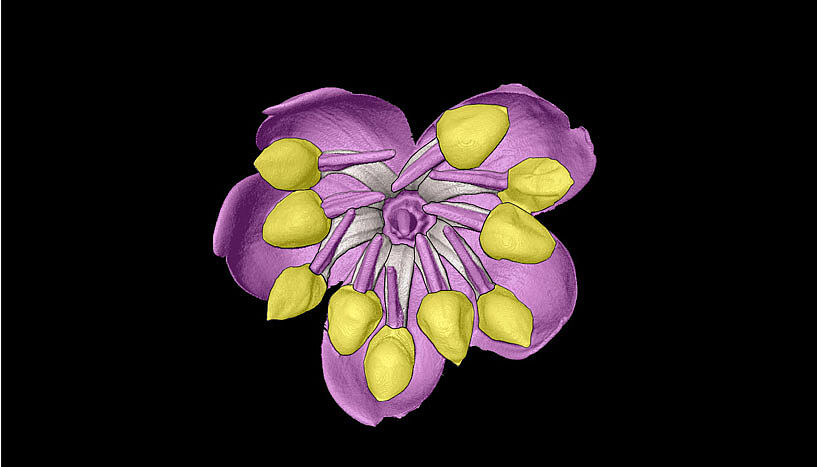How flowers adapt to their pollinators
05. Dezember 2019Modularity facilitates rapid adaptation of single floral organs to different pollinators
The first flowering plants originated more than 140 million years ago in the early Cretaceous. They are the most diverse plant group on Earth with more than 300,000 species. In a new study in Communications Biology, evolutionary biologists around Agnes Dellinger and Jürg Schönenberger from the University of Vienna have analysed 3-dimensional models of flowers and found that flower shapes can evolve in a modular manner in adaptation to distinct pollinators.
Flowering plants are characterized by an astonishing diversity of flowers of different shapes and sizes. This diversity has arisen in adaptation to selection imposed by different pollinators including among others bees, flies, butterflies, hummingbirds, bats or rodents. Although several studies have documented that pollinators can impose strong selection pressures on flowers, our understanding of how flowers diversify remains fragmentary. For example, does the entire flower adapt to a pollinator, or do only some flower parts evolve to fit a pollinator while other flower parts may remain unchanged?
In a recent study, scientists around Agnes Dellinger from the Department of Botany and Biodiversity Research from the University of Vienna investigated flowers of 30 species of a tropical plant group (Merianieae) from the Andes. “Each of these plant species has adapted to pollination by either bees, birds, bats or rodents”, says Dellinger. Using High-Resolution X-ray computed tomography, the research team produced 3D-models of these flowers and used geometric-morphometric methods to analyse differences in flower shape among species with different pollinators.
The researchers could show that flower shapes have evolved in adaptation to the distinct pollinators, but that flower shape evolution was not homogeneous across the flower. In particular, the showy sterile organs of flowers (petals) adapted to the different pollinators more quickly than the rest of the flower: the reproductive organs have evolved more slowly. “This study is among the first to analyse the entire 3-dimensional flower shape, and it will be exciting to see whether similar evolutionary floral modularity exists in other plant groups”, concludes Dellinger.
Publication in Communications Biology:
Modularity increases rate of floral evolution and adaptive success for functionally specialized pollination systems; Agnes S. Dellinger, Silvia Artuso, Susanne Pamperl, Fabián A. Michelangeli, Darin S. Penneys, Diana M. Fernández-Fernández, Marcela Alvear, Frank Almeda, W. Scott Armbruster, Yannick Staeder, Jürg Schönenberger; in Communications Biology.
DOI: 10.1038/s42003-019-0697-7
Wissenschaftlicher Kontakt
Agnes Dellinger, PhD
Department für Botanik und BiodiversitätsforschungUniversität Wien
1030 - Wien, Rennweg 14
+43-1-4277-54083
agnes.dellinger@univie.ac.at
Univ.-Prof. Dr. Jürg Schönenberger
Department für Botanik und BiodiversitätsforschungUniversität Wien
1030 - Wien, Rennweg 14
+43-1-4277-540 80
juerg.schoenenberger@univie.ac.at
Rückfragehinweis
Stephan Brodicky
Pressebüro der Universität WienUniversität Wien
1010 - Wien, Universitätsring 1
+43-1-4277-175 41
+43-664-60277-175 41
stephan.brodicky@univie.ac.at
Downloads:
CIMG5560.JPG
Dateigröße: 2,37 MB
DSC_7249.JPG
Dateigröße: 2,42 MB
DSC_7304.JPG
Dateigröße: 2,75 MB
redoHyp4.jpg
Dateigröße: 2,74 MB




